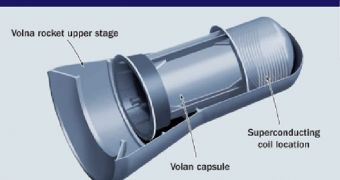Arguably the most dangerous stage of a space flight is the reentry into the Earth's atmosphere. The process is so harsh that space agencies involved in the International Space Station (ISS) use it to destroy the resupply capsules completely. They are steered into the incorrect angle, and they burn up and disintegrate. The space shuttles and Soyuz capsules are the most advanced things we have in this regard. The NASA vehicle is protected by a large number of ceramic tiles, which offer as much protection as possible against the fierce temperatures that are generated by the spacecraft's impressive speed when it enters the atmosphere.
However, at this point, efforts are being conducted to produce a completely new generation of heat shields, one that does not rely on direct protection, but rather on deflecting the super-hot plasma that is formed beneath spacecraft as they pass through the upper atmosphere. A number of space agencies in European countries, together with EADS Astrium, and the German aerospace center, DLR (Deutschen Zentrums for Luft- und Raumfahrt), are currently working on an approach that makes use of superconducting magnets. The goal is to create such powerful magnetic fields, that the plasma around the ship would essentially not be allowed to touch its hull, PhysOrg reports.
The new technology, if successfully developed, could see future spacecraft being made lighter by the magnetic fields, as the need for other protective coatings would disappear. The European Space Agency (ESA) plans to test the new designs by retrofitting them on a test module attached to a missile, to be launched from aboard a submarine into the upper atmosphere. The approach calls for a superconducting coil to be placed at the front of the ship. It would create a magnetic field that would extend beyond the tip of the ship, essentially ensuring that all heat is dissipated. At this point, the group is testing the performances of the superconducting coils, and has not established all other technical details.
Still, the consortium has announced that it plans to outfit the device to a Russian “Volan” escape capsule when the project is completed. The main issue related to this approach is the fact that the plasma that will form underneath the descending space capsule will block radio signals and telemetry readings, which are vital during descent. Additionally, experts are still unsure how trajectory calculations will need to be modified in order to compensate for the amount of air displaced through the new method.

 14 DAY TRIAL //
14 DAY TRIAL //